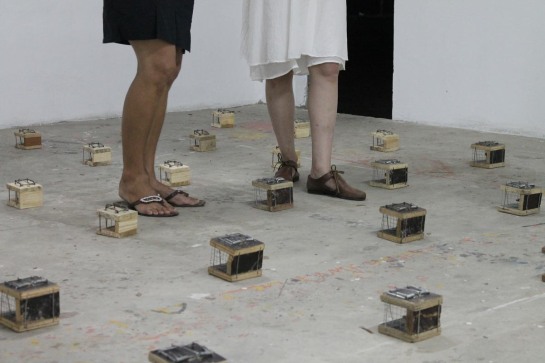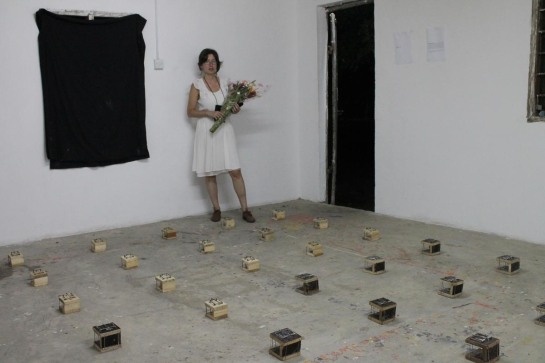Finally received Parallel events Manifesta 10 catalog with 2 spreads for our project – SALE / video art for public space
video
my intervew for Stigmart VideoFocus Magazine
From my exhibition at Nafasi Art Space in Dar Es Salaam, Tanzania
12 of April 2013
Nafasi Art Space, Dr es Salaam, Tanzania
I supposed to make a project about children games in Tanzania. However the reality has changed the topic into the games of adults. It was my first weekend in Dar when my equipment was stolen quite creatively. This experience forced me to do a research about security issue in Dar es Salaam.
I decided to use any simple camera I can borrow, and it will be suitable to Tanzanian “second hand” style. I asked and accepted any help from other artists of art space and any other participant.
While life in an expanding city becomes to be more and more dangerous, most people don’t want to accept it. Even though if they had bad experience, they are trying to forget it. They are dancing, singing and trying to defy the unpleasant news. Maybe it is just an auto training to be able to stay longer in this dangerous place?
Don’t be scared, just if you are walking along the road chose the side where you can see cars coming. Don’t carry backpacks. Keep only small amount of money in you pockets. Don’t carry bags. Don’t be alone. Life in Tanzania is devoid of stress.
The issue of fear is the main in this film. It is also about my own fear and desire to survive during two months in challenging environment.
Hakuna Matata,
Video, 25 min
The second screen with Security Notice from American Embasy in Dar es Salaam, January 2013
Along with film I presented a site specific installation Setup. However I think this situation shows not only problems of Africa, but first of all the imperfection of the global system.
Every one wants to help Africa. However are donations a good help?
I came to Tanzania as an Artist in Residency for 2 months and was really surprised to see ugly forms capitalism has there in Africa. While some people don’t have enough food and live on the street others change expensive cars, have beautiful villas with security and staff for housework. Life was so easy here before capitalism, and local people don’t get to use to work hard here. However they easily learned that everything has material value. Some people ask money even if you help them. Level of education in the country is very low. This year most students failed their exams. At the same time I saw people in public buses were reading books how to be successful in business and how to save money. Micro finance banks become to be popular, but witches are more common. They ask to bring a part of albino’s body as it can help to get success in business or in other fields of life. There is no system, probably like in every developing country (even city doesn’t have plan and streets are without names), and this is let easily hide and steal money. Poverty makes people very creative not only in recycling, but also in tricks they use to steal.
Learn the Landscape
I started a new project about children’s creative outdoor games from around the world. Especially how they interact with the landscape and nature. The aim of this page is to create a web-resource with games all over the world. All participation is welcome! Please contribute games, rules, comments, cultural context, and multimedia resources.
Here are a FB page of the project
One Day In Berlin
It is becoming to be Series.
Here is another part of One Day In project which is about crisis in Europe.
At the beginning of a piece a Russian conversation in the middle of Berlin. One woman probably is looking for a job, the other man has found one already, he is a popular fantasy hero.
Turn a bit and here Russian tv is making a reportage about economic crisis while in one public park one local man repairs a fence by himself.
One Day In Lisbon
The Beauty
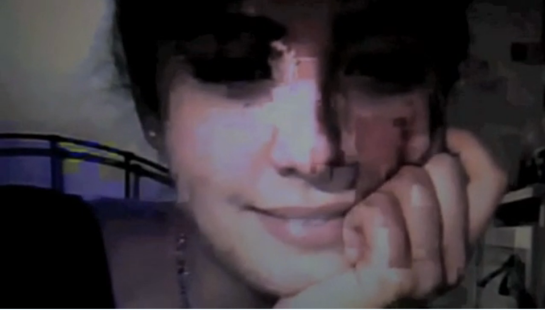 5 min film with Annie Acciarino about the beauty, its nature, fragility and power.
5 min film with Annie Acciarino about the beauty, its nature, fragility and power.
A New Apartment Every Month
There are approximately 2 700 inhabitants in a small community of Karasjok (northern Norway). In the centre of the village, on the back side of the one of three supermarkets there is a place for conteiners with old technical stuff. When people buy a new washing machine they bring the old one here. Once a month the container has to be released. At the end of each month there are so many devices that it is possible to build a new apartment full of all necessary furniture.
A piece from the video
As electronic designs has been risen last 30 years, e-waste problem has emerged. U.N Environmental Department warns that waste generated by electronic products and components pose major environmental and health hazards to the world in general and in particular to the world’s developing nations. Richer nations are already using developing countries as dumping grounds for their e-waste. This e-waste problem will only grow as continued development spurs sales of electronic devices in these poorer countries. The report indicates that communication devices such as cell phones and pagers are responsible for the fastest growth in electronic waste. Obsolete computer and refrigerator components are also major contributors to the problem.
The U.N. report calls for the regulation of collection and management of electronic waste. Developing nations such as China and India, which currently perform inefficient and unregulated recycling of electronic waste leading to hazardous conditions for their populations, will need to come up with systems of e-waste regulation. Of particular concern is that although the waste from electrical products represents only a small percentage of the world’s total waste, the toxicity of its components generate more dangerous pollution than the larger mass of traditional waste in landfills. Guiyu is the largest electronic waste (e-waste) site on Earth, according to Wikipedia. Since late 1980s a lot of e-waste from overseas has been imported to China and dismantled at Guiyu. The state-run newspaper the Peoples Daily said in 2006 that Guiyus more than 5,500 e-waste business employed over 30,000 people. According to the local goverment Web site, city businesses process 1,5 million tons of e-waste a year, pulling in $75 million in revenue. As much as 80 percent of it comes from overseas. It’s as much as 10 times cheaper to export the waste to developing countries for the United States, as safety rules skyrocket domestic disposal costs, says the U.S. Enviromental Protection Agency. Americans scrap 400 million electronic products per year, and generated 2.6 million tons of e-waste in 2005. U.N E-waste Form reportFollowing the E-waste Trail
Shoes Are Important. Story about Sami Wedding
I was invited for the real Sami wedding yesterday. The bride was Alice Balto. She is a journalist of local newspaper in Karasjok who wrote an article about me several days ago.
My congratulations to Alice and Ken Robert!
Here some pictures from this amazing wedding and a small video sketch which called Shoes Are Important.
story about my mum
My mum lives in Crimea, Ukraine and I don’t visit her as often as I wish I did. Every time I see her she tells me stories from her past and present making me feel like I travel through her life full of enthralling, sometimes dangerous, situations. Sometimes she repeats herself or adds something new, although she believes everything she says. Twenty years ago, when my mum was 51, she suffered from cancer and survived. She has never given up, even when doctors told her she almost didn’t have any chance. She believes that completely changing her diet and lifestyle saved her. Lately my mum moved to the countryside and she still adds plants growing around into her diet. I decided to record my mother’s stories in order to share her knowledge and positive point of view. I hope this film could be useful for people who also suffer from cancer — the disease of modern artificial life — and it will give all of us force to fight against this terrible disease and to make our life more connected with nature, as we are all a part of it.
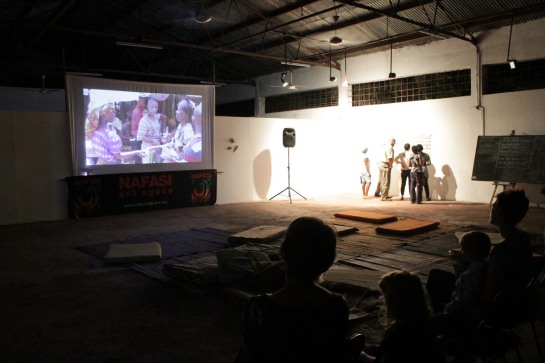
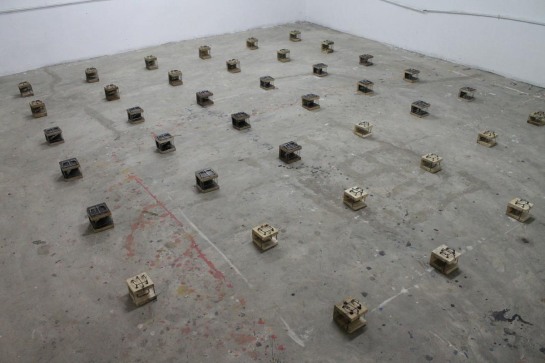 Setup,
Setup,
